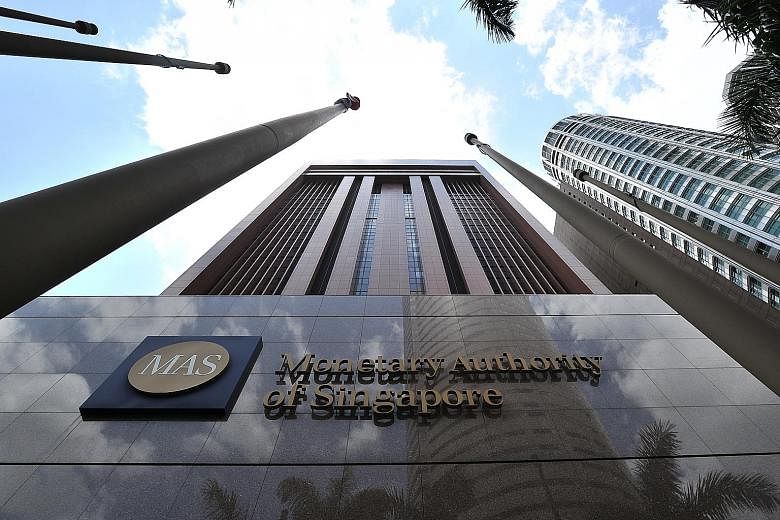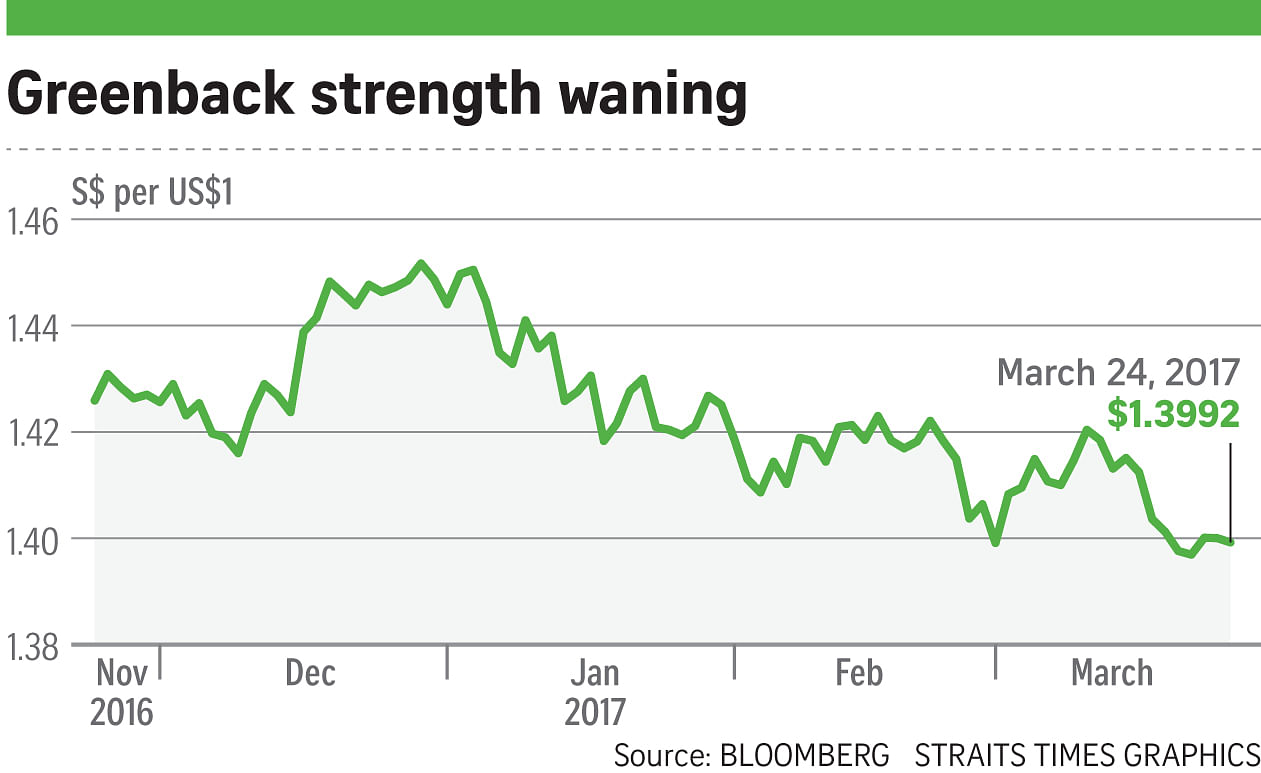The economic outlook is brightening and inflation is on the rise but the Monetary Authority of Singapore (MAS) is expected to leave its exchange rate policy unchanged when it meets next month, economists say.
This is because the pickup in economic activity has been limited to export-oriented sectors such as manufacturing, while the broader labour market remains weak.
Uncertainties remain over the outlook for international trade, amid rising protectionism worldwide.
The central bank uses the exchange rate as its main monetary policy tool to strike a balance between inflation from overseas and economic growth. The rate is allowed to float within a policy band that the MAS can adjust when it reviews monetary policy.
A stronger currency counters inflation by making imports cheaper in Singdollar terms, while a weaker Singdollar - which corresponds to easing monetary policy - helps to lift growth by making exports cheaper abroad.
The Singdollar policy band is now on a path of zero appreciation against the currencies of key trading partners - a "neutral" policy stance put in place last April in an environment of slow growth and low inflation. However, the landscape has since shifted.
The US dollar has weakened significantly this year amid expectations that the Federal Reserve may be less gung-ho about raising interest rates and investors becoming more hesitant about a Trump-initiated rally. It takes about S$1.399 to buy US$1, down from S$1.45 at the start of the year.
Strong global demand for electronics - in particular, semiconductors - has given Singapore's manufacturing sector a shot in the arm. Factory output recorded another month of stronger-than-expected growth last month, expanding 12.6 per cent and beating economists' expectations of a 10 per cent rise.
This, in turn, has helped lift exports and overall economic growth numbers.
Singapore logged its third straight month of positive inflation last month, owing, in part, to gradually recovering oil prices.
Higher inflation usually puts pressure on the central bank to tighten monetary policy by allowing the Singdollar to appreciate at a faster rate against the currencies of key trading partners.
But most economists think the MAS will maintain its policy stance next month, as growth and inflation remain within the ranges forecast by the central bank.
"There's a little bit of steam coming back to global growth and inflation is also higher, but it's still within the parameters they have forecast," said CIMB Private Bank economist Song Seng Wun.
In addition, the uptick in growth has not been broad-based and might not last, noted OCBC economist Selena Ling.
"We still don't know if the pickup in manufacturing will be ephemeral. It's partly due to a low base last year, and there are also worries about rising protectionist sentiment not just in the US but also in other major economies," she said.
Ms Ling added that the MAS will "probably take a wait-and-see approach" and policy tweaks are more likely to come at its next meeting in October.
Mr Song agreed: "From a policy standpoint, the status quo should be maintained unless the growth momentum picks up pace or becomes far more broad-based."
While inflation has crept back into positive territory and is expected to continue rising, "we do not foresee a broad-based increase in prices", said ANZ economist Ng Weiwen, who also expects the central bank to stand pat on its Singdollar policy.
"Inflation is likely to rise moderately, reflecting a combination of unfavourable base effects and (administrative price increases)," he added.
These increases include higher carpark charges and household refuse collection fees, as well as hikes to water prices and service and conservancy charges.
But the labour market remains lacklustre and wage increases have slowed, which means companies are under less pressure to pass these costs on to consumers, Mr Ng noted. This helps keep inflation in check and within the central bank's comfort zone, he added.



